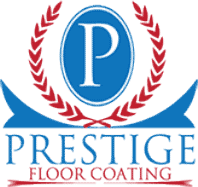How to Clean Non-Skid Flooring
The texture of non-skid flooring provides the traction you need for safety, but it also means you need to take a different approach to cleaning. Non-skid floors should be cleaned by frequent sweeping with a push broom.
When you need to use disinfectant, be gentle and avoid any soaps that will leave behind a residue. Mopping with a vinegar and water solution works best for most anti-skid floor coatings.
Sweeping Non-Skid Flooring
Just like you need to floss every day so that germs don't turn into plaque on your teeth, you need to sweep your non-skid flooring to remove debris before it gets hardened or grimy.
In commercial settings, make it a morning or nightly routine to sweep the non-skid areas of your floors. Sweep away debris and disinfect with vinegar.
If you have non-skid flooring at home, such as in a bathroom or on a pool deck coating, try to sweep at least once a week. More often may be necessary in outdoor areas when there's dirt or leafy debris sitting around. Some plant matter might leave a sticky grime as it rots.
What Cleaners Can Be Used on Non-Skid Flooring?
We recommend that you avoid some of the obvious answers that come to mind, such as multi-purpose floor cleaners or a dish soap solution.
Many floor cleaners are designed to leave behind a slightly waxy residue that you definitely don't want to add to non-skid flooring! Soaps and detergents will all leave soap scum on the non-skid grains, too, which will get slippery if not thoroughly rinsed and dried.
Here's what we recommend for cleaning and disinfecting anti-skid floors:
- Broom clean daily
- Blot to remove spilled liquids
- Have a bottle of 50/50 vinegar/water solution handy
- Mop clean with plain water or a vinegar solution as needed
- Clean with a dense, synthetic fiber broom (not a mop) if you have extreme anti-skid flooring
Also, some manufacturers make specific cleaning products for non-skid flooring. These are designed to be used with a sponge mop or disposable mop cloth. If you use these, be sure to follow the manufacturer's instructions—and first, verify with the company that their product is suitable for your specific type of anti-skid flooring.
Non-Skid Flooring Replacement or Refinishing
An old application of non-skid flooring might have lost its resistance due to foot traffic, chemical spills, and weathering. It's important to replace anti-skid flooring anywhere people depend on it—especially on wheelchair ramps and in places where employees contend with slippery spills.
To find out about concrete floor coatings with custom levels of anti-skid resistance, contact us at Prestige Floor Coating in Maryland.




